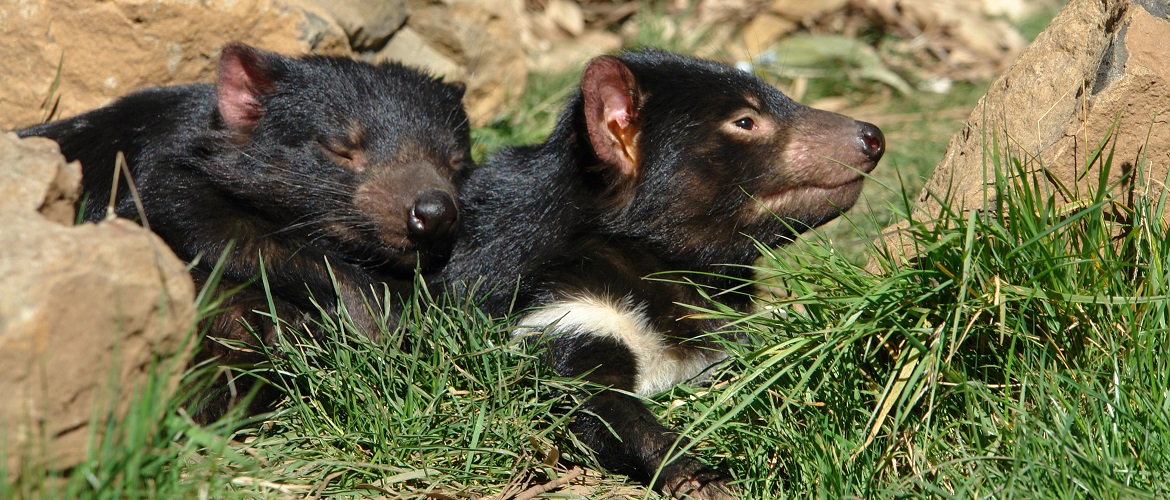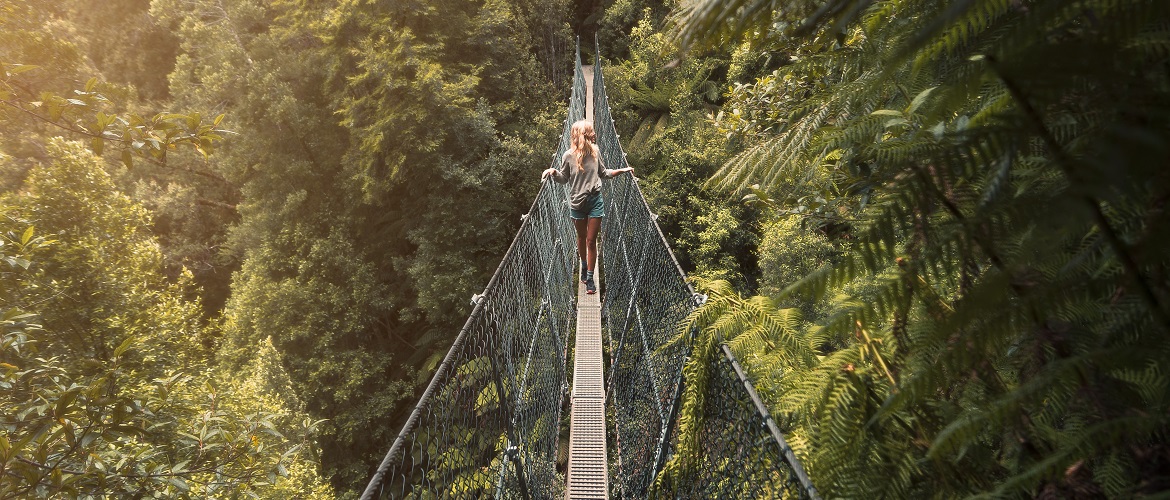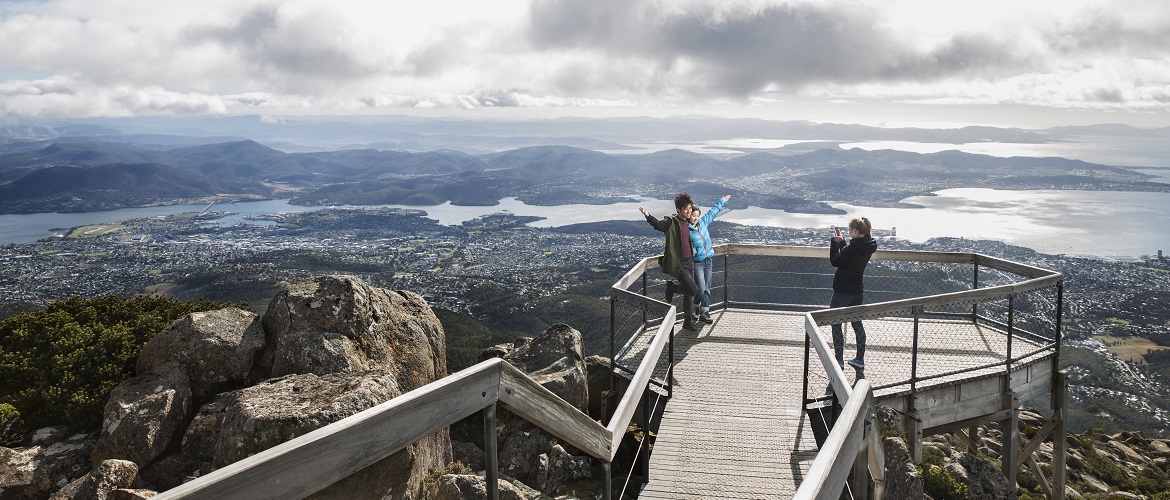This is the Express Itinerary, ideal for experiencing the best of Tasmania in one week. The itinerary is based on 7 nights and 8 days and 7 nights touring Tasmania and fits in with our 3-9 Night Package accommodation. It assumes commencement in Launceston; however it can be tailored to begin in any location.
Day 1
From Hobart, Launceston Airport and the Spirit of Tasmania routes, travel along the A1 north into the Launceston city.
Your first stop in Launceston should be the stunning Cataract Gorge. The Cataract Gorge is a beautiful nature reserve and unique feature of Launceston, with many picturesque walks, the famous suspension bridge, a café and restaurant, and the longest single-span chairlift in the southern hemisphere.
Close by, the Penny Royal Adventures offers further dining options, the Matthew Brady Dark Ride, gold fossicking, kids play area and a trip on the newly restored Brig Tamar. For the more adventurous, try the cliff walk, rock climbing, zipline and quick drop.
Other exciting activities to enjoy around Launceston are:
Tamar River Cruises
City Park and the Macaque Monkey enclosure
Boag’s Brewery Centre
Royal Automobile Museum
Queen Victoria Museum
Tasmania Zoo
Franklin House
Prestige Leisure Tours – wine and food tours and
Hollybank Treetops Adventure
Travel north of Launceston on the A7, stopping at the Tamar Island Wetlands Walk and Grindelwald Swiss Village. Further afield is Beaconsfield, known for the local mining and the Beaconsfield Mining and Heritage Centre. Further north is Beauty Point (home to Seahorse World and Platypus House) and the nearby Narawntapu National Park.
Complete your first day by heading back to Launceston on the A7 and dining at one of the city’s wonderful restaurants, both in the city centre and the Seaport.
Day 2
Head north on the A3 to Scottsdale. From Scottsdale, detour onto Cuckoo Rd to visit the Cuckoo Falls. Head back on the A3 to visit Derby and the Trail of the Tin Dragon. A detour on the B82 will take to you the picturesque Little Blue Lake at Mt Cameron. Back on the A3 and heading towards St Helens, also stop in at the Pyengana Cheese Factory, Pub in the Paddock and St Columba Falls.
Once in St Helens, travel north on the C850 to Binnalong Bay and the world-famous Bay of Fires. This stunning beach and surrounding area offers amazing photo opportunities as well as bird watching, fishing, swimming and surfing.
Travel south on the A3 to Bicheno. Bicheno is home to Eastcoast Natureworld, Douglas Apsley National Park and the Sea Life Centre, which offers 180 degree views of the ocean. While in Bicheno, visit the Rocking Rock , the blowhole and join a Bicheno Penguin Tour.
Continue south on the A3 to Freycinet National Park, via Coles Bay Road. Freycinet is the east coast’s most popular location, with the famous pink Hazards, wonderful bushwalks and Wineglass Bay, all found on the peninsula. The popular Wineglass Bay Cruises is a great way to explore the Wineglass Bay – only alternatively accessible by a 3 kilometre bushwalk or try a quad bike tour with All4 All Terrain tours/Freycinet. A National Parks Pass is needed for entry into the Freycinet National Park.
Follow the A3 south to Swansea, one of the oldest towns on the east coast. Just outside Swansea, visit the convict-built Spikey Bridge, built in 1843.
Day 3
Today, embark on one of two options:
Maria Island and Tasman Peninsula
Travel on the A3 to Triabunna, the departure point of the ferry to Maria Island. Maria Island has something for everyone – historic ruins, sweeping bays, rugged cliffs and mountains and remarkable wildlife. The ferry departs morning and afternoon, with plenty to keep you occupied in between. Once on the island you will discover a place where there are no motor vehicles, no shops and no worries.
Travel south on the A3 to Sorrell, then turn south-east on the A9 to the Tasman Peninsula. Visit the unique wonders of this corner of the state, making sure not to miss seeing the Remarkable Cave, Devil’s Kitchen, the Blowhole and the Tessellated Pavement. For the adventure-seeker, the Totem Pole, off the coast of Fortescue Bay is a climber’s best challenge.
Visit Port Arthur and allow yourself the remainder of the day to visit the iconic Port Arthur Historic Site, Australia’s largest convict heritage site. In the evening, try the Port Arthur Ghost Tour, one of Tasmania’s best ghost tour experiences.
Midlands – Campbell Town, Ross, Oatlands and Richmond
Head inland on the B34 to Campbell Town, known as the heart of Tasmania. There are many cafés and the park area is a great place for a picnic. Among the attractions is one of Australia’s oldest bridges – the Original Bridge (1822), and the Elizabeth Campbell Wetlands area. Lining the streets of Campbell Town is the Convict Brick Trail. Engraved in each brick are authentic profiles of convicts transported to Australia, their crime and sentence.
South of Campbell Town is the historic town of Ross. Worth a visit are the Female Convict Station, Ross Bakery and the Tasmanian Wool Centre.
Further south on the A1 is Oatlands, which contains Australia’s largest collection of Georgian sandstone architecture, many of which are now craft shops and galleries. Visit the Callington Mill Distillery and the convict-built courthouse.
The most notable of these charming Midlands towns is Richmond, accessed by travelling south on the A1, then east on the B31. Richmond is one of Tasmania’s must-see towns, notable for its historic significance to Australia. Stop at Richmond Bridge, which was completed in 1825 and is Australia’s oldest known large stone arch bridge. Also, in Richmond visit Australia’s oldest gaol and the oldest remaining Catholic Church. The Richmond Maze & Tearooms have exciting mazes for the children to enjoy, and Zoodoo Wildlife Park is an exciting hands-on wildlife park.
Day 4
From the Tasman Peninsula: travel north on the A9 back to Sorell. From Richmond: travel south on the B31. Continue from both routes by heading along the A3 west into Hobart.
Hobart is Tasmania’s capital city and the second oldest city in Australia. Start your morning by looking around Hobart’s popular Salamanca Place, where you will find studios and shops displaying a great variety of Tasmanian art and crafts. The famous Salamanca Market is a must do on a Saturday morning.
Explore the city of Hobart, perhaps experiencing one of the following activities:
St David’s Park and Cathedral
TMAG – Tasmanian Museum and Art Galley
Maritime Museum of Hobart
Battery Point
Cascade Female Factory Historic Site
MONA (Museum of Old & New Art)
Royal Tasmanian Botanical Gardens
There are many cruising options in and around Hobart that allow you to explore the region in ease – the Peppermint Bay, Bruny Island, Tasman Island and Iron Pot cruises all depart from the Hobart wharf.
A short drive from the city centre on the A6 and B68 is Australia’s first Shot Tower, one of only three Shot Towers still existing in Australia. A half hours’ drive from the city via the B64 and C616 is the summit of Mount Wellington, with stunning panoramic views of the city.
Follow the A6 south past Kingston to the Huon Valley. In Huonville, try a thrilling Huon Jet Boat Ride, and then visit some examples of great Tasmanian products at Willie Smith’s Apple Shed and Homehill Vineyard. Continuing down the A6 to Franklin and visit the Wooden Boat Centre.
South in Geeveston, experience the Tahune Forest Airwalk and the picturesque Arve Forest Drive – both excellent opportunities to view the stunning Huon pine forests. Further south on the A6, make a turn right on Hastings Caves Road. Visit the popular Thermal Springs in the area before taking a tour down to the spectacular Hastings Caves. In this area, you will also find the Hastings Forest Drive picnic area.
Day 5
Head north on the A10 to New Norfolk. This picturesque rural town has many historical buildings to visit, including the Willow Court Historic Site, built in 1830 and the oldest mental hospital in Australia on its original site and St Matthews Church, built in 1823. Continuing north, stop in at Hamilton, Ouse and Gretna to view charming pastoral landscapes. Hamilton’s St Mary’s Church was built in 1848 has headstones dating back to early settlement.
Further north on the A10 are the towns of Tarraleah, Bronte Park and Derwent Bridge, all gateways to the Central Highland’s and noted for their fishing and bushwalking. In Bronte Park, visit the General Store and three examples of historic single men’s huts for a great example of the harsh living conditions of the past. Derwent Bridge is also home to the popular Wall in the Wilderness, with amazing woodcarvings depicting the history of the area.
Lake St Clair, off the A10 on Lake St Clair Road, lies at the south end of the Cradle Mountain and Lake St Clair National Parks and is part of Tasmania’s World Heritage Area. This lake is surrounded by protected forests with the beauty of snow-capped peaks. There are a variety of walks in the area, trout fishing, and a cruise of Lake St Clair.
Continue on the A10 Queenstown. The town is known for its unique landscape, transformed by the mining and logging of the past. Visit Eric Thomas Galley Museum, Evans Old Corner Store and the underground tour of Mt Lyell Mine. For spectacular views of the surrounding areas, visit the Donaghy’s Hill Lookout for 360 degree views of the Franklin River Valley,the Iron’s Blow Lookout (between Queenstown and Gormanston) for views of the old copper mine and the Spion Kop Lookout at Mt Owen for views of the stunning Lake Burbury.
Return to the A10 highway and then onto the B24 to Strahan.
Day 6
Take a walk down the main street of Strahan and explore the number of boutique shops and craft centres, including the Cove Gallery and Wilderness Woodworks. Enjoy a live performance of ‘The Ship That Never Was’ – the fun, true story of the Great Escape from Sarah Island, or head down to the Strahan Wharf where you can opt for a World Heritage or Gordon River Cruise. You can also opt for a breathtaking journey aboard the Wilderness West Coast Railway to explore the rugged wilderness of the World Heritage Area. Nearby, take an easy 50 minute walk out to Hogarth Falls, and visit the Teepookana Plateau for a brilliant view of the Huon pines.
Continue on the B27 (Zeehan Highway), turning into the A10 (Murchinson Highway) towards Cradle Mountain. Along the way, you will pass through mining town Rosebery which is home to Australia’s steepest golf course and Tullah which was once a mining town that was redeveloped as a Hydro village.
Park your vehicle at the Cradle Mountain Visitor Information Centre to pick up your entrance pass (if you have not already purchased a Tasmanian National Parks Holiday Pass). From here, take the shuttle bus where you can begin one of many scenic walks that cater to all levels of fitness or try kayaking around Dove Lake.
Travel north on C132, turning right onto the C136 into Sheffield. If travelling with children, turn left from the C136 onto C140 and take the time to stop in at Promised Land to visit the largest maze complex in the world at Tasmazia. From here, continue north to Sheffield. Sheffield is known as ‘the town of murals’ and is a quaint town rich with antique and craft shops.
Day 7
Take the B14 east from Sheffield and stop in Railton to see its various displays of topiary sculptures along the main road.
Head north on the B13 to Latrobe, the home of the Axeman’s Hall of Fame, the Cherry Shed and the Platypus Interpretation Centre. Visit Reliquare, a fun shop for all ages. The Court House Museum tells the story of Latrobe, and Sherwood Hall is believed to be the oldest house in Latrobe, built in 1848. Just outside of Latrobe is the Anvers Fudge Factory, a must-visit for sweet lovers.
Nearby, the Warrawee Forest Reserve and Myrtle Hole sit on the banks of the Mersey River. Here, there is a 5 kilometre walking track and two parkland areas with barbeque facilities and ponds stocked with trout. The area is rich with history with the power generation site (first of its kind in the area), the old shale works and mine shafts, remnants of the shale bridge across the Mersey River, and the town’s old pump station.
Travel south from Latrobe on the A1 towards Launceston. Stop in at the Ashgrove Cheesefarm for a sample of fine Tasmanian cheese, before heading into Elizabeth Town. At Elizabeth Town, you are spoilt for choice for a lunch stop – either at the popular ETC Bakery or the delicious Christmas Hills Raspberry Farm & Restaurant.
Continue south to Deloraine, a quaint little town that holds the popular Deloraine Craft Fair each November. Detour west of Deloraine on the B12 to Mole Creek. Take a tour of the Marakoopa or King Solomon Caves where you can observe the underground rivers, great cathedrals and glow worms. Here are also the Trowunna Wildlife Park, the Chudleigh Honey Farm and Tasmanian Truffles.
Return to Deloraine, then continue on the A1 through Westbury and on in to Launceston.
Day 8
For your final day, explore the areas of Launceston missed on your first day, prior to your departure.




